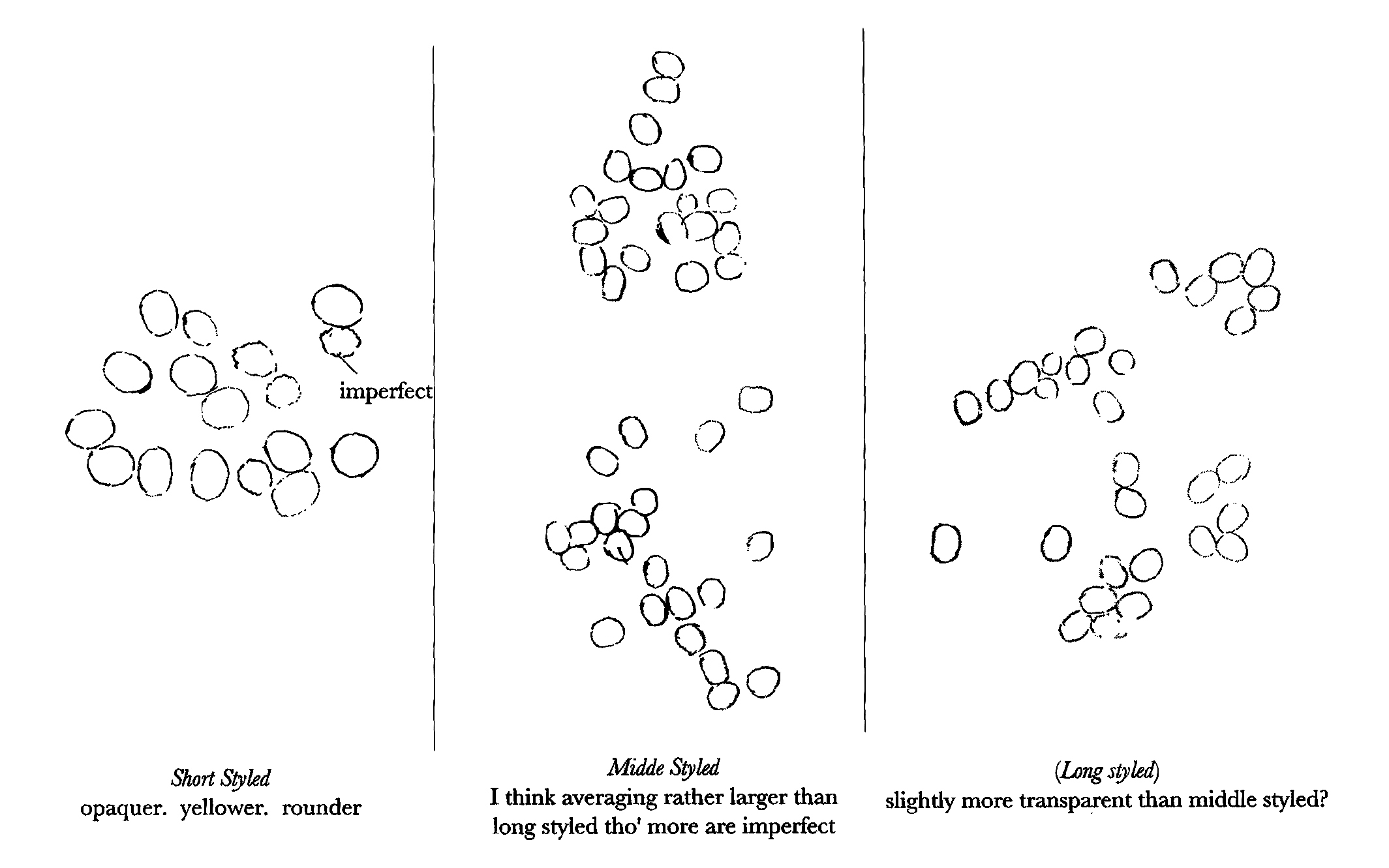From William Erasmus Darwin [15 March 1864]1
Southampton
Tuesday
My Dear Father,
I came back from the Atherleys2 yesterday & found the primroses; I have drawn all three forms again with same result.3 The middle-styled seems very imperfect in its pollen, but if any thing is the least bit bigger than the Long styled4 I am not at all sure of this. It is an odd chance I had just got a pot of the Middle Styled & was going to examine it, & had even begun before your flowers came, and I thought one flower of the middle seemed to have pollen not unlike Short styled but it was so very imperfect that I could not be sure.
I am going to look again.5
On looking through a good many plants at a green-house, I could not find a single pink variety with middle style, & I see the one you sent me is white
I am very glad you are going to have Dr Jenner6
Your affect son | W E D
[Enclosure]

CD annotations
Footnotes
Bibliography
Collected papers: The collected papers of Charles Darwin. Edited by Paul H. Barrett. 2 vols. Chicago and London: University of Chicago Press. 1977.
Correspondence: The correspondence of Charles Darwin. Edited by Frederick Burkhardt et al. 29 vols to date. Cambridge: Cambridge University Press. 1985–.
‘Dimorphic condition in Primula’: On the two forms, or dimorphic condition, in the species of Primula, and on their remarkable sexual relations. By Charles Darwin. [Read 21 November 1861.] Journal of the Proceedings of the Linnean Society (Botany) 6 (1862): 77–96. [Collected papers 2: 45–63.]
Forms of flowers: The different forms of flowers on plants of the same species. By Charles Darwin. London: John Murray. 1877.
‘Illegitimate offspring of dimorphic and trimorphic plants’: On the character and hybrid-like nature of the offspring from the illegitimate unions of dimorphic and trimorphic plants. By Charles Darwin. [Read 20 February 1868.] Journal of the Linnean Society of London (Botany) 10 (1869): 393–437.
Summary
Has drawn all three forms of primroses CD sent "with same result". Has found no pink variety with middle style.
Letter details
- Letter no.
- DCP-LETT-4416
- From
- William Erasmus Darwin
- To
- Charles Robert Darwin
- Sent from
- Southampton
- Source of text
- DAR 108: 85, 173–4
- Physical description
- ALS 4pp, sketch †
Please cite as
Darwin Correspondence Project, “Letter no. 4416,” accessed on 16 April 2024, https://www.darwinproject.ac.uk/letter/?docId=letters/DCP-LETT-4416.xml
Also published in The Correspondence of Charles Darwin, vol. 12


